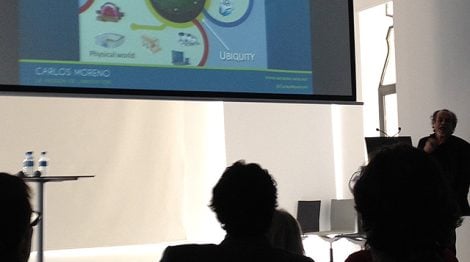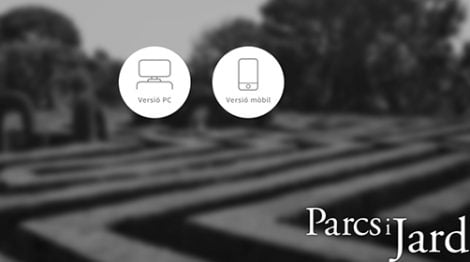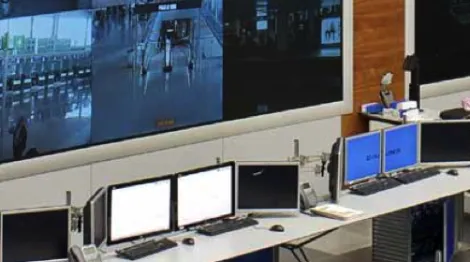What is a CMMS and what is it for?
A CMMS is software designed to facilitate the management of an organization's asset maintenance, placing "assets" or equipment at the center of maintenance. We explain it in detail


The acronym CMMS stands for Computerized Maintenance Management Software.
Interestingly, this acronym is used in both Spain and France. In Latin America, they prefer to use the acronym GMAC, which stands for Gestión del Mantenimiento Asistido por Computadora (Computer-Assisted Maintenance Management), and in the rest of the world, CMMS, Computerized Maintenance Management Software.
As its name suggests, it is software to facilitate the management of an organization’s asset maintenance, mainly physical assets, although they may not be. The philosophy of these systems is to put assets or equipment at the center of maintenance, around which everything that affects it will be linked (technical documents, work orders, maintenance plans, spare parts, costs, etc.).
This type of tool allows the maintenance department to perform proper management of its assets and everything that “surrounds” them, such as: maintenance tasks and activities, costs, spare parts inventory, internal human resources, subcontractors, etc. It can be said that these solutions are responsible for optimizing the maintenance processes of industrial organizations.
A CMMS is software designed to facilitate the management of an organization’s asset maintenance, placing “assets” or equipment at the center of maintenance.
I Main Functions of a CMMS
Today, there are many CMMS solutions on the market, and although there are differences between them, mainly in the interaction with the user, there are also differences in terms of the functionalities available.
However, most of this type of software has 3 main modules with basic functions for its management:
- Maintenance Module
- Inventory module
- Purchasing module
You may be considering implementing a CMMS in your organization but already have an ERP in which you manage purchasing and warehouse management software (WMS). Then, you will ask yourself: Do I have to implement all 3 modules?

The answer, in most cases, is: No. In this case, you could implement only the maintenance module with the advantages provided by its respective functions. However, to have real financial data on maintenance, it is highly recommended to implement all 3 modules and integrate them with the rest of the existing systems.
Each of the listed modules has a series of functionalities. Depending on the software chosen, it will have a greater or lesser number of functionalities, as well as a greater or lesser capacity for integration with other solutions.
Although it is not imperative, it is recommended to implement all 3 modules and integrate them with the rest of the existing systems.
I Basic Functionalities
Most CMMS on the market have the basic functionalities that, at a minimum, allow:
- Asset management and its corresponding hierarchy.
- Planning and scheduling of preventive maintenance.
- Management of corrective maintenance derived from breakdowns or incidents.
- Control of spare parts and replacement stocks.
- Purchasing management of MRO material (Maintenance, Repair and Operations).
- Management of internal human resources.
- Subcontractor management.
- Management of requests and work orders.
- Control of costs associated with maintenance.
- Management of regulatory compliance in safety.
Next, we are going to go into a little more detail about the characteristics of each of the modules that make up a CMMS:
1. Maintenance module
This module is the main module of a CMMS system and around which the rest of the system’s modules and functionalities revolve. It is in this module where asset management and the management of preventive and corrective maintenance are carried out, among other functionalities.
In an organization with a high number of assets, it is vital to correctly manage the preventive maintenance program in order to avoid activity stoppages in production derived from a breakdown that can be avoided with preventive maintenance. A CMMS helps the maintenance department to plan the periodicity of these preventive maintenances and, once programmed, automates the creation of the work orders associated with these maintenances.
Today, thanks to the IIoT (Industrial Internet of Things), it is possible to connect some CMMS systems with the sensors of plant assets. This allows organizations to take a step further in the pro-activity of maintenance. The integration of the data extracted from the assets with a CMMS system allows for condition-based maintenance, which will automatically launch work requests or work orders according to the current status of the equipment. This allows for preventive and/or corrective maintenance based on field data, as well as provides predictive analytical capabilities to anticipate equipment failure.

On the other hand, it is equally important to correctly manage the organization’s assets. Asset management allows tracking of the data generated by the maintenance activities carried out, as well as the metadata associated with the assets. Among these data we can find: purchase dates, guarantees, asset characteristics, asset statistics, asset documentation and a multitude of other data. However, the most important and powerful data managed by a CMMS are the asset history data.
The history of an asset is the record of the different maintenance actions carried out on the specific asset. This information is very useful for the maintenance department for its subsequent analysis and extraction of conclusions. For example, by studying this data, failure patterns can be determined and the planning of preventive maintenance can be modified based on this.
2. Inventory module
The inventory module is also very important and useful for an organization with a high number of assets. It is in this module where the organization will manage the warehouses and MRO spare parts stocks of the assets.
The implementation of this module allows the maintenance department to associate the necessary spare parts and materials according to the type of work to be undertaken. In turn, the CMMS system will perform a control of the minimum stock of spare parts and materials to ensure that they are available and, in case of need for purchase, send a notification or make the purchase automatically (function performed by the purchasing module). In this way, it is avoided to be in the situation of having to perform maintenance on an asset and not having the necessary material for its execution, which can cause a costly and unnecessary prolonged production stoppage.
3. Purchasing module
The purchasing module is the one that provides functionalities to perform all the administrative tasks related to the purchasing department of a company.
In this module, all the management of material and spare parts replenishment will be carried out in an automated way to ensure the necessary minimum stock, as well as the punctual acquisition of extraordinary material. This management includes everything from requesting quotes and sending orders to receiving invoices.
I Advantages of Implementing a CMMS
For a small organization with few assets, maintenance management can be carried out using different methods, from simple lists of equipment, materials used and maintenance carried out, to spreadsheets or Access-type databases created by oneself.
However, for medium and large organizations, this management using this methodology can become an arduous and laborious task, while consuming a high number of hours and limiting the exploitation of the data. Therefore, for these organizations it is recommended to use an integrated system for maintenance management (CMMS).
The implementation of a CMMS provides the following benefits, among others:
- Reduction of maintenance management costs.
- Increase labor efficiency.
- Adequate documentation management.
- Standardization and homogenization of maintenance tasks.
- Automated inventory and purchasing management.
- Decrease in corrective maintenance.
- Control of the time management of field technicians.
- Greater cost control.
- Ability to analyze management data to improve maintenance plans.
- Optimize decision-making after data analysis.
- Identify the causes of breakdowns.
In medium and large organizations, it is highly recommended to use an integrated system for maintenance management (CMMS).
I Conclusions
In summary, a CMMS system helps organizations optimize the resources used in maintenance management, as well as to better manage assets, inventory and purchases. The implementation of this type of solution together with a mobility tool allows organizations to move from paper and pencil work orders made with an Excel spreadsheet to a fully digitized and automated system.
It can also be concluded that the implementation of a CMMS system in an organization will require a study of the needs of each company, where it will be determined which modules it requires and its integration with other existing systems.





